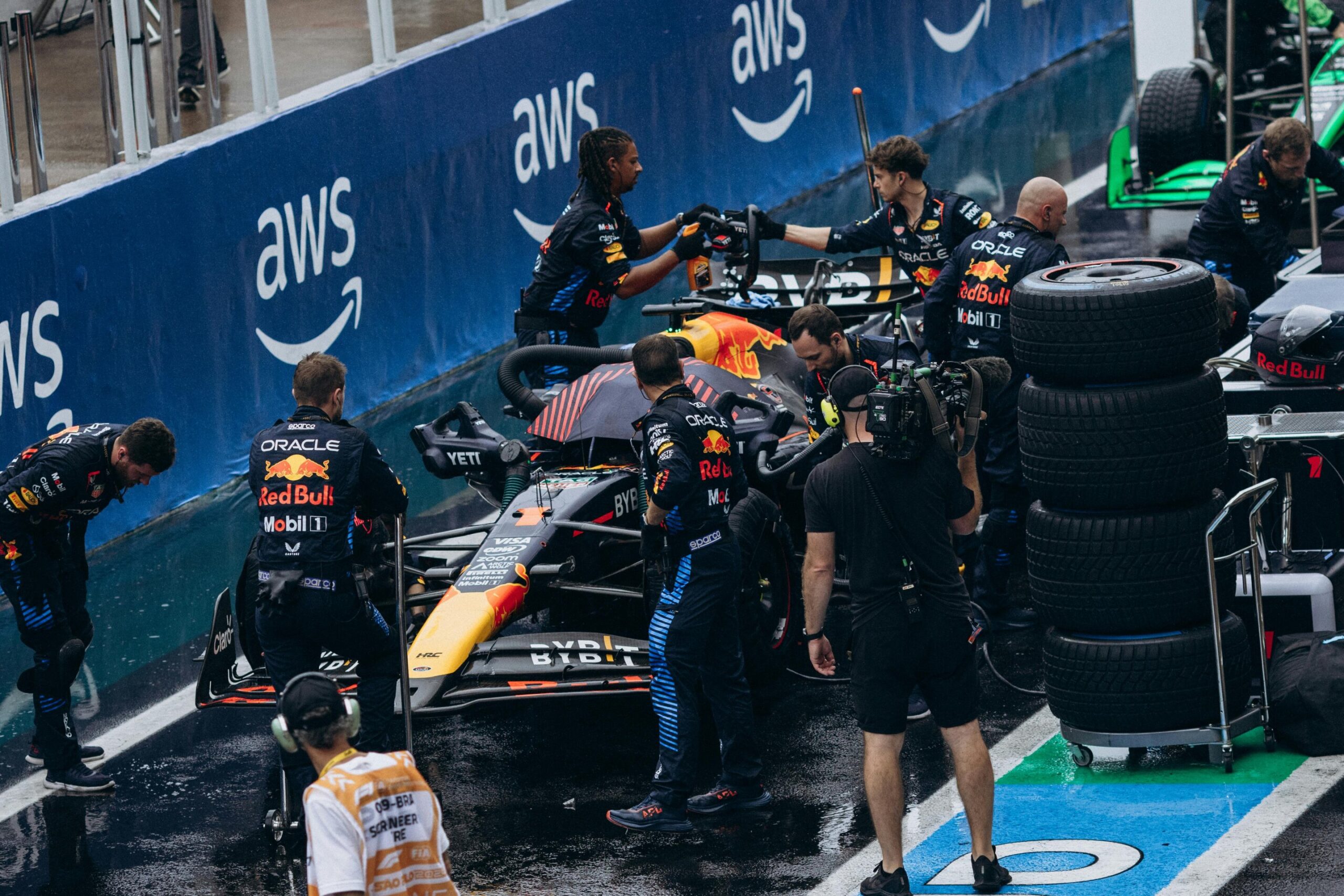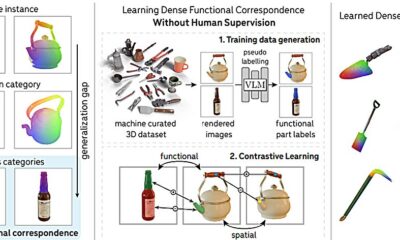Tech
Instagram is going PG-13. Will that make a difference for teens?

Depending on who you are, Instagram might now seem a bit more PG-13. That’s by design.
Meta has rolled out a suite of new content moderation tools on Instagram aimed at addressing concerns that young people are seeing “unsafe content” on the social media platform. Users under the age of 18 will now by default only see content that matches what one would see in a PG-13 movie, based on the Motion Picture Association’s definition.
The rollout of these new tools, which Meta calls the “most significant update to Teen Accounts” since they were introduced in 2024, comes amid renewed concerns that the company’s platforms remain unsafe for young users. This, after social media CEOs, including Meta’s Mark Zuckerberg, have been put in the congressional hot seat over the risks their platforms pose to teens.
The question remains: Will making Instagram PG-13 for teen users really protect them?
Ursula Smartt, an associate professor of law at Northeastern University’s London campus, isn’t so sure.
“The changes apply only to teen-specific accounts, which are accounts that teens have created using their truthful birth dates or accounts that Instagram has determined,” Smartt says. “Yet, it is common for teens to lie about their ages online to avoid certain restrictions.”
Age verification laws are already being introduced in a number of countries to avoid this problem. However, the number of people using virtual private networks, or VPNs, has surged in response, Smartt explains.
“Most teenagers know and use VPNs already, which mask their internet traffic and spoof their location,” allowing them to get around age verification laws in a given country, Smartt says.
Given how resourceful teens are in evading rules regardless of whether they’re in the virtual or real world, Instagram’s new rules could actually put more pressure—and responsibility—back on parents.
Anything that minimizes the amount of unsafe content teens don’t want to see on social media is a move in the right direction, according to Rachel Rodgers, an associate professor of psychology at Northeastern who studies the impact of social media on young people. However, these new tools are much more effective as a jumping-off point for educating children about how to engage with social media.
“The more children are having conversations with their parents about what they’re doing on social media and why and how and what this means, the better the outcomes,” Rodgers says.
That’s admittedly a big ask. Most parents barely have enough time to watch along during their children’s screen time, she says, let alone every time their teen hops on Instagram. But the sooner parents can start talking about how to use social media with their children, the better. Those conversations help young people develop critical skills, like how to detect intent behind what people are saying and posting on social media. That’s integral for learning how to then interact with and respond to people online in a healthy way, Rodgers says.
There are options for making the platform even more restrictive, and Rodgers admits it can be tempting for parents to just turn on these settings and let Meta’s designers do their job. It’s much better for parents to approach these new tools collaboratively and make it a conversation.
“That’s when you’re explaining to teens why some content would be restricted,” Rodgers says. “Why would you want them to see it? Why might you not want them to see it?”
Those conversations might reveal something surprising: Parents and their children are more aligned than either might think when it comes to content on social media.
“[Teens are] generally not trying to go view things that we would consider really outside of their age,” Rodgers says. “They’re quite happy to not be pushed too much on that. They find it uncomfortable.”
This story is republished courtesy of Northeastern Global News news.northeastern.edu.
Citation:
Instagram is going PG-13. Will that make a difference for teens? (2025, October 21)
retrieved 21 October 2025
from https://techxplore.com/news/2025-10-instagram-pg-difference-teens.html
This document is subject to copyright. Apart from any fair dealing for the purpose of private study or research, no
part may be reproduced without the written permission. The content is provided for information purposes only.
Tech
Samsung’s Galaxy XR Mixed Reality Headset Undercuts Apple’s Vision Pro by $1,700

It has been five years since Samsung and Google stopped supporting their respective mobile virtual reality headsets. For a second try, the companies have partnered up with a bolder vision in the mixed reality space, starting with the new Galaxy XR. Announced last year as Project Moohan, it’s the first headset powered by Android XR, a new platform for smart glasses and headsets built on Android and Google’s Gemini assistant from the ground up.
The Galaxy XR is available today in the US and South Korea for $1,800. (You can finance it for $149 per month for 12 months.) That’s a leap over standard VR headsets like the Meta Quest 3, but a significantly lower price than the $3,499 Vision Pro, which Apple is refreshing this week with the new M5 processor.
Galactic Vision
Photograph: Julian Chokkattu
I was able to demo the headset again last week at a closed-doors media event in New York City held by Samsung, Google, and Qualcomm—the Galaxy XR is powered by Qualcomm’s Snapdragon XR2+ Gen 2 chip—but not much was different from my original hands-on experience last year, which you can read more about here. The official name and price were the two big question marks, but that has now been addressed.
The Galaxy XR purports to do nearly everything that Apple’s device does. Pop the headset on and you’ll be able to see the room you’re in through the pancake lenses and layer virtual content over it, or whisk yourself off to another world. Your hands are the input (controllers are available as a separate purchase), and it uses eye tracking to see what you want to select. You can access all your favorite apps from the Google Play Store; XR apps will have a “Made for XR” label.
Samsung’s headset is more plasticky and doesn’t feel as premium as Apple’s Vision Pro—I noticed the tethered battery pack on a demo unit looked well-worn with fingerprint smudges on the coating. But this general construction makes it feel significantly lighter to wear. I wasn’t able to try it for a long period, but it felt comfortable, with the only issue being a sweaty brow after a 25-minute bout with it on. The headset was warm at the top, but the battery pack remained relatively cool. Speaking of, the battery lasts 2 hours or 2.5 hours if you’re purely watching video. That’s on par with the original Vision Pro, though the M5 version extends it to 2.5 with mixed use.
Tech
What the US$55 billion Electronic Arts takeover means for video game workers and the industry

Electronic Arts (EA) is one of the world’s largest gaming companies. It has agreed to be acquired for US$55 billion in the second largest buyout in the industry’s history.
Under the terms, Saudi Arabia’s sovereign wealth fund (a state-owned investment fund), along with private equity firms Silver Lake and Affinity Partners, will pay EA shareholders US$210 per share.
EA is known for making popular gaming titles such as Madden NFL, The Sims and Mass Effect. The deal, US$20 billion of which is debt-financed, will take the company private.
The acquisition reinforces consolidation trends across the creative sector, mirroring similar deals in music, film and television. Creative and cultural industries have a “tendency for bigness,” and this is certainly a big deal.
It marks a continuation of large game companies being consumed by even larger players, such as Microsoft’s acquisition of Activision/Blizzard in 2023.
Bad news for workers
There is growing consensus that this acquisition is likely to be bad news for game workers, who have already seen tens of thousands of layoffs in recent years.
This leveraged buyout will result in restructuring at EA-owned studios. It adds massive debt that will need servicing. That will likely mean canceled titles, closed studios and lost jobs.
In their book “Private Equity at Work: When Wall Street Manages Main Street,” researchers Eileen Appelbaum and Rosemary Batt point to the “moral hazard” created when equity partners saddle portfolio companies with debt but carry little direct financial risk themselves.
The Saudi Public Investment Fund (PIF) is looking to increase its holdings in lucrative sectors of the game industry as part of its diversification strategy. However, private equity firms subscribe to a “buy to sell” model, focusing on making significant returns in the short term.
Appelbaum notes that restructuring opportunities are more limited when larger, successful companies—like EA—are acquired. In such cases, she says, “financial engineering is more common,” often resulting in “layoffs or downsizing to increase cash flow and service debt.”
Financial engineering combines techniques from applied mathematics, computer science and economic theory to create new and complex financial tools. The failed risk management of these tools has been implicated in financial scandals and market crashes.
Financialization and the fissured workplace
The financialization of the game industry is a problem. Financialization refers to a set of changes in corporate ownership and governance—including the deregulation of financial markets—that have increased the influence of financial companies and investors.
It has produced economies where a considerable share of profits comes from financial transactions rather than the production and provision of goods and services.
It creates what American management professor David Weil calls a “fissured workplace” where ownership models are multi-layered and complex.
It gives financial players an influential seat at the corporate decision-making table and directs managerial attention toward investment returns while transferring the risks of failure to the portfolio company.
As a result, game titles, jobs and studios can be easily shed when financial companies restructure to increase dividends, leaving workers with little access to these financial players as accountable employers.
Chasing incentives and cutting costs
The Saudi PIF has stated a goal of creating 1.8 million “direct and indirect jobs” to stimulate the Saudi economy. But capital is mobile, and game companies will likely follow jurisdictions that have lower wages, fewer labor protections and significant tax incentives.
Some Canadian governments are working to keep studios and creative jobs closer to home. British Columbia recently increased its interactive media tax credit to 25%.
The move was welcomed by the chief operations officer of EA Vancouver, who said “B.C.”s continued commitment to the interactive digital media sector…through enhancements to the … tax credit … reflects the province’s recognition of the industry’s value and enables companies like ours to continue contributing to B.C.”s creative and innovative economy.”
This may buffer Vancouver’s flagship EA Sports studio, but those making less lucrative games or in regions without financial subsidies will be more at risk of closure, relocation or sale. Alberta-based Bioware—developer of games including Dragon Age and Mass Effect—could be at risk.
Other ways of aggressively cutting costs might come in the form of increased AI use. EA was called out in 2023 for saying AI regulation could negatively impact its business. Yet creative stagnation and cutting corners through AI will negatively impact the number of jobs, the quality of jobs and the quality of games. That could be a larger threat to EA’s business and reinforce a negative direction for the industry.
Game players have low tolerance for quality shifts and predatory monetization strategies. Research shows that gamers see acquisitions negatively: development takes longer, innovation is curtailed and creativity is stymied.
Consolidation among industry giants may cause players to lose faith in EA’s product—and games in general, given the many other entertainment options that are available.
Creative control and worker power at risk
Some have raised concerns that the acquisition could affect EA’s creative direction and editorial decisions, potentially leading to increased content restrictions.
While it’s still unclear how the deal will influence EA’s output, experiences in other industries might be a sign of things to come. For instance, comedians reportedly censored themselves to perform in Saudi Arabia.
The acquisition may also have a chilling effect on the workers’ unionization movement. Currently, no EA studios in Canada are unionized. Outsourced quality assurance workers at the EA-owned BioWare Studio in Edmonton successfully certified a union in 2022, but were subsequently laid off. Fears of outsourcing, layoffs and restructuring could discourage future organizing efforts.
On the other hand, the knowledge that large financial players are making massive profits could galvanize workers, especially considering that before the buyout, EA CEO Andrew Wilson was paid about 264 times the salary of the median EA employee.
The deal certainly does nothing to bring stability to an already volatile industry. Regardless of any cash injection, EA remains very exposed.
This article is republished from The Conversation under a Creative Commons license. Read the original article.![]()
Citation:
What the US$55 billion Electronic Arts takeover means for video game workers and the industry (2025, October 21)
retrieved 21 October 2025
from https://techxplore.com/news/2025-10-us55-billion-electronic-arts-takeover.html
This document is subject to copyright. Apart from any fair dealing for the purpose of private study or research, no
part may be reproduced without the written permission. The content is provided for information purposes only.
Tech
An Amazon outage has rattled the internet. A computer scientist explains why the ‘cloud’ needs to change

The world’s largest cloud computing platform, Amazon Web Services (AWS), has experienced a major outage that has impacted thousands of organizations, including banks, financial software platforms such as Xero, and social media platforms such as Snapchat.
The outage began at roughly 6pm AEDT on Monday. It was caused by a malfunction at one of AWS’ data centers located in Northern Virginia in the United States. AWS says it has fixed the underlying issue but some internet users are still reporting service disruptions.
This incident highlights the vulnerabilities of relying so much on cloud computing—or “the cloud” as it’s often called. But there are ways to mitigate some of the risks.
Renting IT infrastructure
Cloud computing is the on-demand delivery of diverse IT resources such as computing power, database storage, and applications over the internet. In simple terms, it’s renting (not owning) your own IT infrastructure.
Cloud computing came into prevalence with the dot com boom in the late 1990s, wherein digital tech companies started to deliver software over the internet. As companies such as Amazon matured in their own ability to offer what’s known as “software as a service” over the web, they started to offer others the ability to rent their virtual servers for a cost as well.
This was a lucrative value proposition. Cloud computing enables a pay-as-you-go model similar to a utility bill, rather than the huge upfront investment required to purchase, operate and manage your own data center.
As a result, the latest statistics suggest more than 94% of all enterprises use cloud-based services in some form.
A market dominated by three companies
The global cloud market is dominated by three companies. AWS holds the largest share (roughly 30%). It’s followed by Microsoft Azure (about 20%) and Google Cloud Platform (about 13%).
All three service providers have had recent outages, significantly impacting digital service platforms. For example, in 2024, an issue with third-party software severely impacted Microsoft Azure, causing extensive operational failures for businesses globally.
Google Cloud Platform also experienced a major outage this year due to an internal misconfiguration.
Profound risks
The heavy reliance of the global internet on just a few major providers—AWS, Azure, and Google Cloud—creates profound risks for both businesses and everyday users.
First, this concentration forms a single point of failure. As seen in the latest AWS event, a simple configuration error in one central system can trigger a domino effect that instantly paralyzes vast segments of the internet.
Second, these providers often impose vendor lock-in. Companies find it prohibitively difficult and expensive to switch platforms due to complex data architectures and excessively high fees charged for moving large volumes of data out of the cloud (data egress costs). This effectively traps customers, leaving them hostage to a single vendor’s terms.
Finally, the dominance of US-based cloud service providers introduces geopolitical and regulatory risks. Data stored in these massive systems is subject to US laws and government demands, which can complicate compliance with international data sovereignty regulations such as Australia’s Privacy Act.
Furthermore, these companies hold the power to censor or restrict access to services, giving them control over how firms operate.
The current best practice to mitigate these risks is to adopt a multi-cloud approach that enables you to decentralize. This involves running critical applications across multiple vendors to eliminate the single point of failure.
This approach can be complemented by what’s known as “edge computing“, wherein data storage and processing is moved away from large, central data centers, toward smaller, distributed nodes (such as local servers) that firms can control directly.
The combination of edge computing and a multi-cloud approach enhances resilience, improves speed, and helps companies meet strict data regulatory requirements while avoiding dependence on any single entity.
As the old saying goes, don’t put all of your eggs in one basket.
This article is republished from The Conversation under a Creative Commons license. Read the original article.![]()
Citation:
An Amazon outage has rattled the internet. A computer scientist explains why the ‘cloud’ needs to change (2025, October 21)
retrieved 21 October 2025
from https://techxplore.com/news/2025-10-amazon-outage-rattled-internet-scientist.html
This document is subject to copyright. Apart from any fair dealing for the purpose of private study or research, no
part may be reproduced without the written permission. The content is provided for information purposes only.
-

 Tech1 week ago
Tech1 week agoUK police to upgrade illicit asset recovery system | Computer Weekly
-

 Tech5 days ago
Tech5 days agoWhy the F5 Hack Created an ‘Imminent Threat’ for Thousands of Networks
-

 Tech7 days ago
Tech7 days agoWhat Is Google One, and Should You Subscribe?
-

 Tech3 days ago
Tech3 days agoHow to Protect Yourself Against Getting Locked Out of Your Cloud Accounts
-

 Tech1 week ago
Tech1 week agoMassive UK dieselgate lawsuit reaches court
-

 Fashion1 week ago
Fashion1 week agoUS brand Ralph Lauren reports 2025 sustainability progress
-

 Tech1 week ago
Tech1 week agoWhen does it pay for housing associations to replace water and sewage pipes?
-

 Business6 days ago
Business6 days agoBaroness Mone-linked PPE firm misses deadline to pay £122m

















